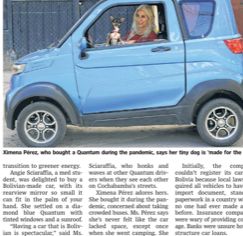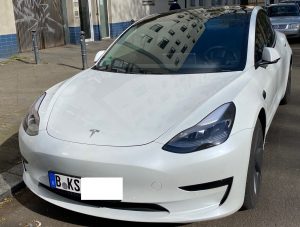The transport of goods is an important and crucial economic sector to achieve reductions in CO2 emissions. According to statistics from Eurostat Total Road Freight Transportation increased by an annual 0.6% percent between 2019 and 2023. Considering the slack during the Covid-19 economic restrictions this is a remarkable development. Most people agree that more freight on rail could allow a much better performance concerning CO2 emissions. This needs substantial investments in infrastructure and intelligent solutions for optimised and accessible freight loading points. The logistics of the last mile for delivery has found many innovative solutions with battery-supported e-vehicles. The tough issue seems to be the production of e-lorries at competitive prices to the Diesel-engines. Considering the legal obligations to take breaks to ensure sufficient concentration of lorry drivers, the battery charging infrastructure has to be planned accordingly. Ports and airports a certainly key infrastructure for freight transport as well. Industry has additional key locations with high freight frequencies and tonne-kilometres. Eurostat data show that EU-wide empty running vehicles account for about 22%. Scope for optimization is, therefore, a continuous challenge for the sector.
E-transportation is high on the agenda in the sector and production of e-lorries a big challenge. There a many positive signs that the sector has taken up the challenge as there are an estimated 100.000 € per year cost advantage of battery-driven lorries compared to traditional ones (Le Monde 2024-9-24 p.16). This is simply a long-term survival issue for the sector. Smart transport solutions add to the productivity potential of the sector in combination with electrification. 
Mobil
Mobilität geht heute schon anders als für meine Generation oder vorherige Generationen. Selbst wenn Autos noch für viele in den Vorstädten und auf dem Land schwer verzichtbar sind, ist der Stadtverkehr im Wandel. Erst die Teslas, die einen scheinbar unaufhaltsamen Aufstieg als relativ saubere Alternative zu den Verbrennern darstellen und jetzt der Quantum aus Bolivien, wie der Wall Street Journal am 27.4.2023 berichtet. Sehr klein, noch ohne Heizung, gemütliche Stadtgeschwindigkeit als Maximum und knapp 100 km Reichweite für 3 mittlere Personen plus Chihuahua oder Dackel für gerade mal 7.500$. Das kosten 2 gute, flotte E-Bikes auch, nur werden die noch schneller geklaut als damit gefahren wird.
Für viele Städter sollte der elektrische Einkaufswagen genügen, dieser steht ja sowieso die meiste Zeit. Kleine Ausflüge ins Umland unternimmt der Städter eher selten, vielleicht noch zum Sport in jüngeren Jahren. Fernreisen werden meistens anders bestritten. Bus und Bahn bieten wieder wachsende Reichweiten, wenn es sein muss nachts. Hier kann weniger groß (auf 4 Rädern) wieder zu mehr Beweglichkeit führen, egal ob als Eigentum oder besser noch als Sharing-Variante. Von den großen Reichweiten mit Fußwegen in deutschen Städten sind wir noch weit entfernt. Das wird sich hoffentlich bald ändern. Bis dahin drehen wir Runden in kleinen Parks und verkehrsberuhigten Ecken. Wem es draußen mit dem Fahrrad zu gefährlich, kalt oder nass ist muss auf den Heimtrainer umsteigen. Mal sehen wie lange es noch dauert bis sich kollektive Vernunft durchsetzt. Verhaltensänderungen sind bekanntlich schwer und dauern wegen Rückschlägen lange. Wir bleiben dran am Thema der nachhaltigen Mobilität,  um unserer (Enkel-)Kinder willen.
um unserer (Enkel-)Kinder willen. 

